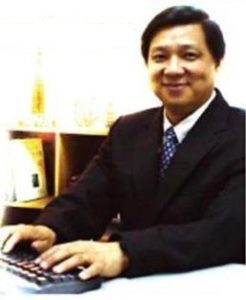Although postmodernism1 appears initially through the writing of Bishop Bernard Iddings Bell in the late 1920s2 and later in architectural design in the 40s,3 it was not until the late 60s that it was commonly used in relation to both architecture (especially in the writings of Charles Jencks) and dance (especially in connection with the Judson School, a choreographic approach named for the venue located in New York’s Greenwich Village).4 Postmodernism finally emerged as a rubric covering various critical methodologies (such as deconstructionism, post-structuralism, post-colonialism, and new historicism) which were assimilated by intellectual and academic circles (such as Jacques Derrida, Michel Foucault, Richard Rorty, Frederic Jameson, Jrgen Habermas and Jean-Franois Lyotard) during and after the mid-80s.5
Postmodern thought essentially challenges the basic tenets of modernism. Scholars of Enlightenment treated the individual “self” as the central basis of the philosophical worldview of modernism. Postmodernists’ central thinking, however, severely criticizes this “self” thought and assumptions of the “self” of modern men. Differing from modernism, postmodernism generally gives an antithetical reaction (though usually not uniform) to any rational reasoning or assumed certainty of scientific, philosophical or religious efforts to explain objective truth claimed to be valid by groups, cultures, traditions or races (or even autonomy of the individual). Instead, it focuses on the relative truths of individuals or individual experiences rather than some objective, abstract, concrete, universal or ultimate principles.6
Modernism places emphasis on logical study of knowledge through the mind (as Ren Descartes says, “I think therefore I am”). Through shared “collectivism,” postmodernism, however, speaks louder but relatively from one’s feeling through the individual’s heart (the postmodern person says, “I feel therefore I am”). Therefore, postmodernists are inclined to include thoughts of the “individual/individualism” as mainstream and advocate subjective “authority to speak.” Deconstructionists (such as Geoffrey Hartman, Hillis Miller and Mark Taylor) would explore traditional materials through the lens of the “deconstruction” methodology for new dimensions of understanding.7 On the one hand, postmodernists focus on the historical nature of things; on the other hand, history is nevertheless constructed by humans. In a way, postmodernists perceive history as comprised of only records, documents, pictures and visual images. History no longer has inevitability and certainty properties. Concepts of both past and future have disappeared. In a sense, postmodernists strive for liberation, and life has become an assembly of fragmented episodes.
____________________
1 For a thorough overview of multidisciplinary and multilingual publications on issues related to postmodernism, please refer to Janusz Przychodzen, Discourses of Postmodernism. Multilingual Bibliography. Part (1951-1993) (University of Massachusetts, Amherst: American Comparative Literature Association Net, 2000. Http://www.umass.edu/complit/aclanet/janusz.html.
2 Deborah Madsen in her bibliography Postmodernism: A Bibliography (1994) places the beginning of postmodernism in the 1920s (Bernard Iddings Bell, “Postmodernism and Other Essays” 1926); see also Bernard Iddings Bell, Religion for Living: A Book for Postmodernists (London: J. Gifford, 1939); B. E. Benson, “Postmodernism,” in Michael J. Anthony, eds., Evangelical Dictionary Christian Education (Grand Rapids: Baker Academic, 2001) p. 544.
3 In terms of its application to the arts, postmodernism appeared initially in connection with architecture over a half century ago in Joseph Hudnot’s treatise Architecture and the Spirit of Man (1949); Pico Miran, Manifesto for Post-Modern Art, New York: American Art Gallery, 1951. B. E. Benson, “Postmodernism,” in Evangelical Dictionary Christian Education, p. 544; http://www.artspeakchina.org/mediawiki/Post_Modernism.
4 Http://www.artspeakchina.org/mediawiki/Post_Modernism.
5 B. E. Benson, “Postmodernity,” in W. C. Campbell-Jack, ed., New Dictionary of Christian Apologetics (Leicester: InterVarsity Press, 2006), p. 561; Http://contemporary_chinese_ culture.academic.ru/617.
6 Http://www.zonaeuropa.com/20090128_1.htm.
7 David A. Hoekema and Bobby Fong, eds., Christianity and Culture in the Cross Fire (Grand Rapids: Eerdmans, 1997), p. 132.
Image Credit: Joann Pittman
